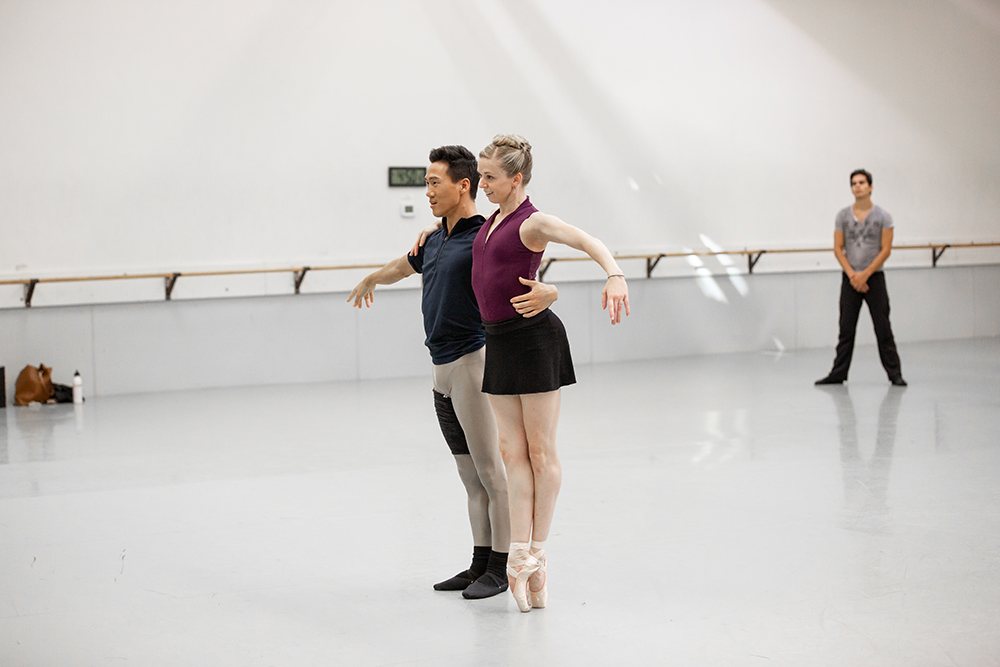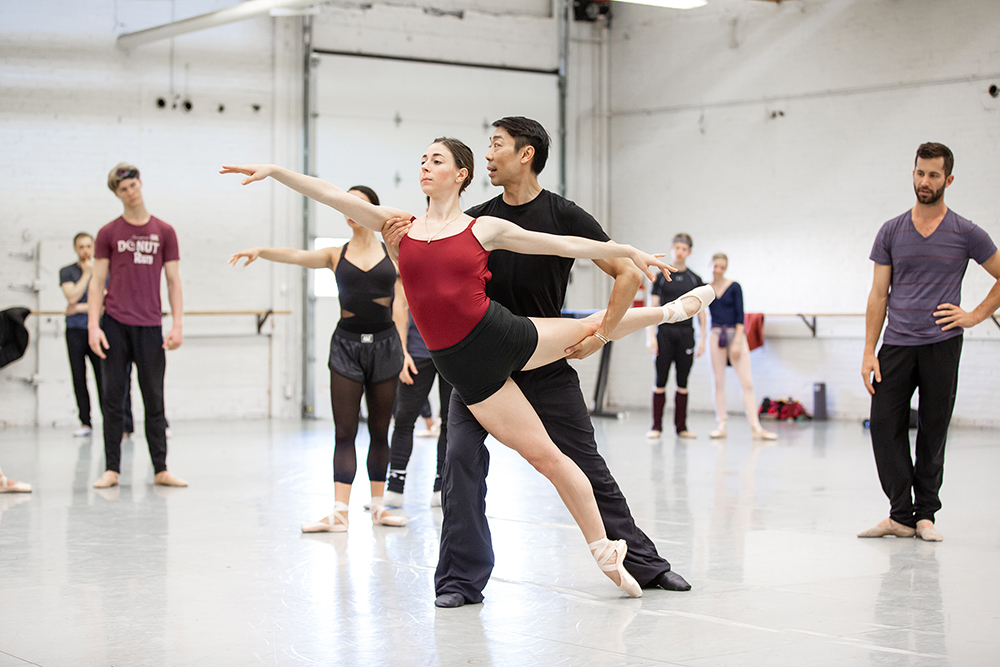There’s no denying that George Balanchine, master choreographer of the 20th century and founder of New York City Ballet, has influenced the way in which today’s choreographers mold their dances. If a line of descent were traced, it would start at Balanchine’s beginnings in America in the 1930’s, a golden thread interlaced with the rich colors and textures of 21st century choreographers.
Lineage: A Collection of Short Ballets pays homage to the great choreographer, as well as two others—Christopher Wheeldon and Justin Peck—who each danced with New York City Ballet in different eras, yet who have risen in recent years as intelligent choreographers like Balanchine himself.
Here, we explore the three choreographers behind the three ballets we’ll perform Oct. 26 through Nov. 3 at the Davidson Theatre.

George Balanchine
Balanchine had an exceptional background in music, being the son of a composer and studying musical theory after his years of ballet training. His visual representation of a score is seen in his steps and phrasing as he moves an ensemble, a trio, a duet or a single person across the stage.
In Square Dance (1957), he displays his love of America while exploring variations of the traditional folk dance, moving dancers in and around a square in patterns found in square dancing. While this ballet no longer uses a caller to call out the steps, the concept is still present with the female or male lead calling and the ensemble repeating.

Christopher Wheeldon
Having danced with NYCB and therefore danced Balanchine’s choreography, Wheeldon experienced living in Balanchine’s mind, developing a sense of patterning and phrasing to precise musicality through the master’s iconic dances. Perhaps most known for his Tony Award-winning work on An American in Paris, he was named New York City Ballet’s first resident choreographer.
The pas de deux from his work, After the Rain, opens with a man and woman standing side by side. Set to minimalist violin and piano, the dancers move with each other, taking slow, developing movements, reconciling their love through each intimate expression. It often moves audiences to tears.
Justin Peck
A soloist and resident choreographer at New York City Ballet, Peck, just 31 years old, has been called “the most eminent choreographer of ballet in the United States” by The New York Times. He took home a Tony Award for his work on the Broadway revival of Rodgers and Hammerstein’s Carousel, and he was the focus of the 2014 dance documentary “Ballet 422.” Most recently, he’s been tapped to choreograph Steven Spielberg’s “West Side Story” film.
Peck’s In Creases (2012) is a three dimensional score with two pianos on the stage, revealing music that builds powerfully in repetitive sections. Likewise, his dancers perform intricate patterns of arms and legs slicing thin air in canon to the rises and falls of the music. As with Balanchine ballets, In Creases is set to music that comes alive with each note.
Balanchine’s golden thread continues to weave the tapestry of dance through modern day choreographers, keeping ballet as relevant to today’s audiences as it was when he first uttered the words, “See the music, hear the dance.”

